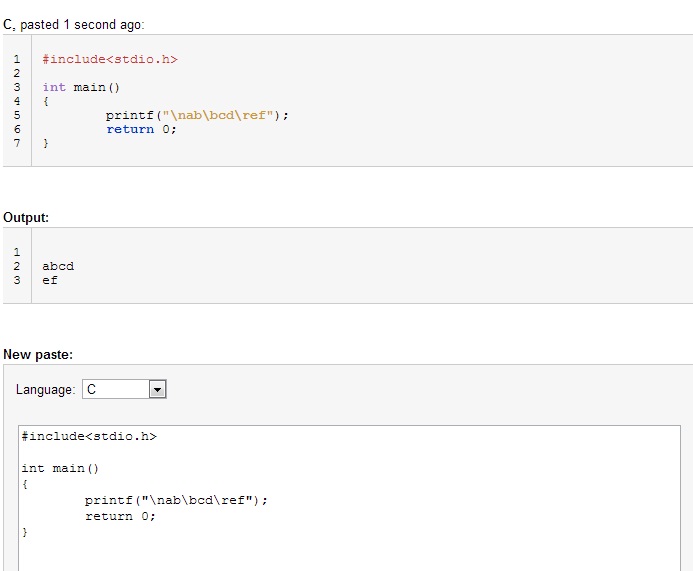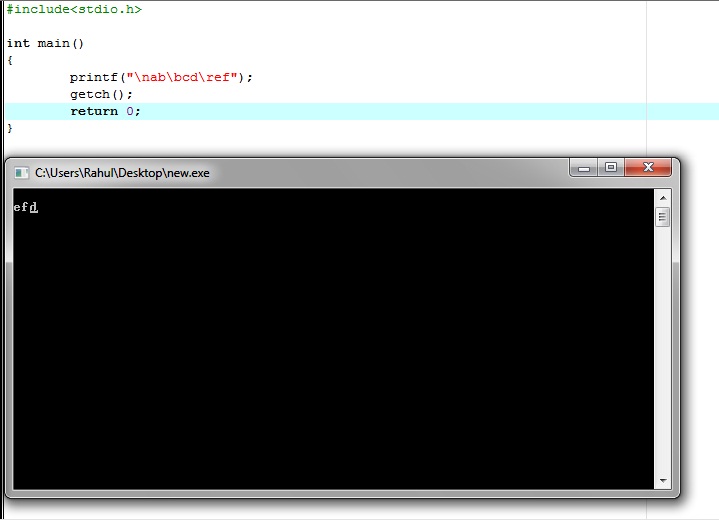Recently while solving one thread I was stuck with following problem.
Am getting two different outputs for same code. One was executed on my machine and another one on codepad.com.
Anyone with any suggestion why this might be happening ?
Codepad.com's Output
My Machine's Output
Thanx.

